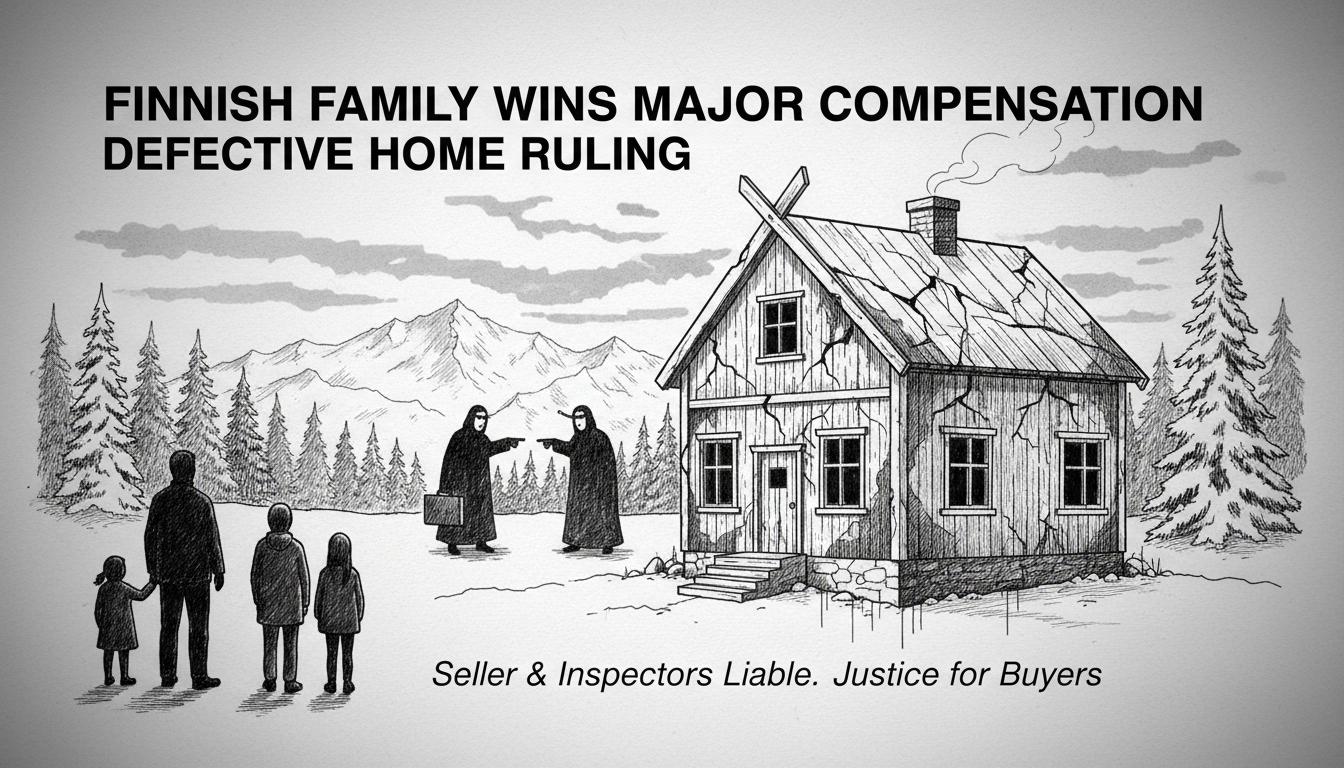A Finnish district court ruled in favor of a low-income family who discovered severe defects in their dream home. The family purchased what they believed was a sound single-family house for €170,000, only to find extensive moisture damage and microbial growth throughout the 50-year-old property.
The parents described the home purchase as their "life's biggest investment." They now must live in a building classified as a potential health risk, though health inspectors did not issue a formal occupancy ban.
The court ordered the seller to pay €85,000 in price reduction to the buyers. This amount should cover the most essential repairs needed to make the house safe. The seller must also cover €4,150 in investigation costs and €24,530 in legal fees.
In an unusual ruling, the property inspection company that conducted the pre-sale assessment was also held liable. Both the seller and inspection firm must share joint responsibility for compensation payments.
The court found the building inspector negligent in their work. The inspector failed to document numerous clear deficiencies that later investigations revealed.
Most seriously, the inspector measured moisture levels of 25.5% in the living room corner. Experts testified that readings above 18% cross the risk threshold. The inspector claimed the high reading resulted from "an unusually wet summer" and fell within normal limits.
External experts stated such moisture levels indicate thoroughly soaked wood where water comprises one-quarter of the weight.
The court considered it particularly serious that the experienced inspector didn't recommend further investigations. This was despite knowing the house contained a false foundation structure known to be risky for buildings of that era.
Had the inspector recommended additional testing, the responsibility would have shifted to the client who ordered the inspection. The property inspection company would have avoided liability.
The company denied the claims in court. Their representative stated they inspected the building carefully without opening structures, which might have revealed the moisture problem.
The client who ordered the inspection was a real estate agent. The same agent had sold the house four years earlier.
The building inspector typically examines rooms, photographs structures, and measures surface moisture from multiple locations. Their final report noted that moisture measurements were indicative rather than conclusive.
The inspector did acknowledge the false foundation was a risk structure. They recommended maintaining drainage ditches properly and directing rainwater at least three meters from the building.
The single-family house, built in 1974, was sold to the family in August 2022. Its water pipes and drainage ditches had been recently renewed. The problems lay much deeper, particularly in the foundation's concrete structures and moisture-damaged walls.
Odors revealed structural damage soon after moving in. The smell first appeared in the utility room, which was sealed. Then new residents noticed odors near the kitchen refrigerator.
Worried owners hired another inspection company, which opened structures with grim results. They found additional deficiencies and clear violations of building regulations.
The previous garage had been converted into a bedroom using technically poor methods, and the conversion wasn't reported to authorities.
The inspection company didn't appeal the district court's ruling from last spring, but the seller did. The Vaasa Court of Appeal has now declined to grant leave for further appeal, meaning the original ruling stands.
Joint responsibility for compensation payments doesn't mean equal division. Each liable party is responsible for the full amount until completely paid.
This case highlights the risks in Finland's housing market, where buyers often rely on professional inspections that sometimes miss critical defects. The ruling sends a clear message that inspection companies must perform thorough assessments or face financial consequences alongside sellers.
